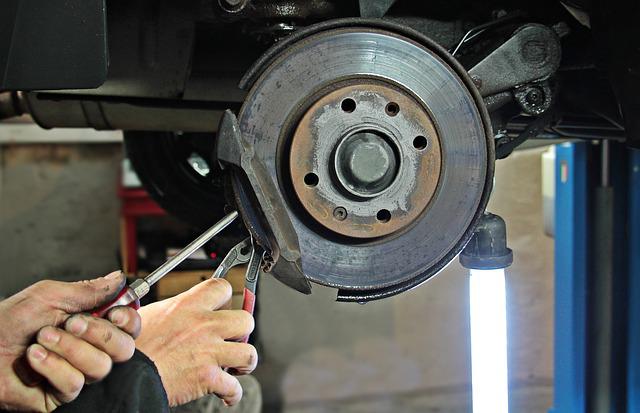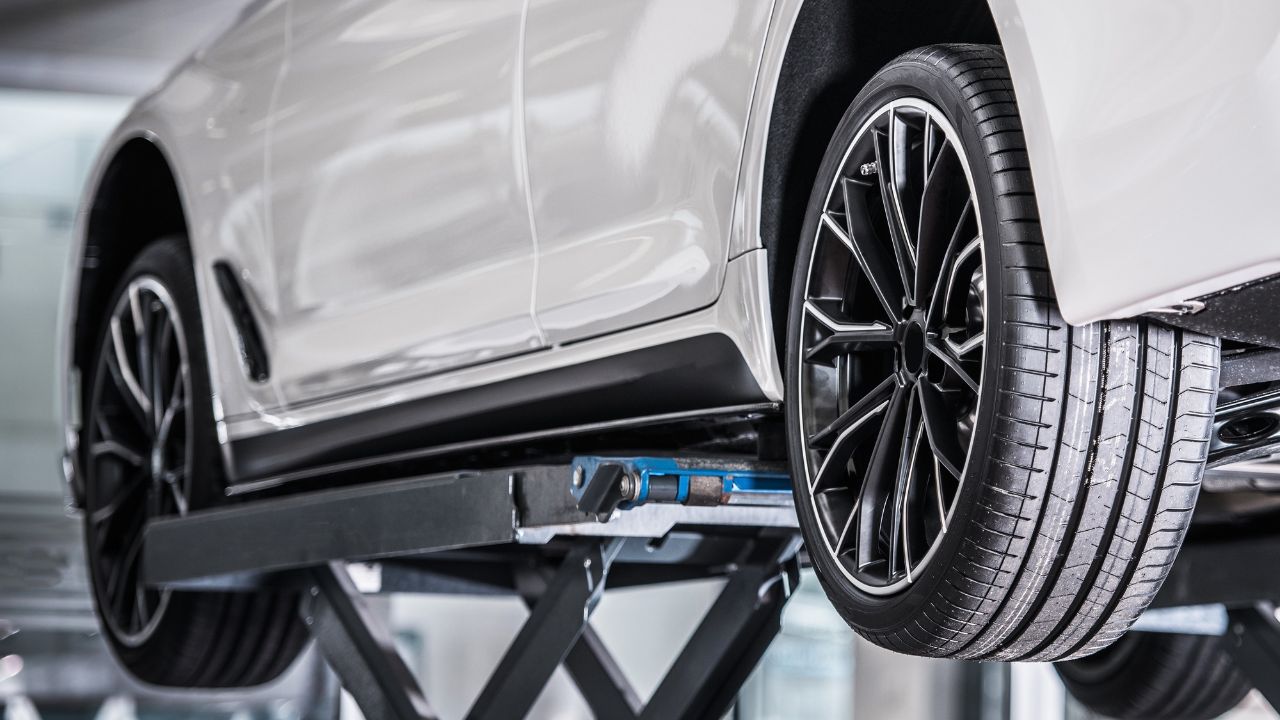
If you want to become a professional in the automotive industry, an auto mechanic education will prepare you for the challenges of the field. While the length and cost of each program vary, they all follow the same basic principles of auto mechanic education. Choose from one of three options for automotive technology programs: a junior college, technical college, or vocational school. In Oklahoma City, you'll find many options for auto mechanic education, including Oklahoma Technical College and Tulsa Tech.
OSUIT
Oklahoma State University's Pro-Tech program prepares students for ASE certification and employment as automotive technicians. The program will provide information about Toyota's latest automotive technology as well as control systems. Graduates will be equipped to either start their own business or move up in their current profession. These are the benefits of attending OSUIT's auto mechanic school in Oklahoma City.
This program integrates classroom learning and laboratory activities with hands-on experience at approved industry sites. An interview with a student dealer will assist students in completing the application process. OSUIT also has T-TEN accreditation. The school's online catalog offers hundreds of topics related to automotive. You can search specific topics or browse the entire catalog. A computer lab is available for students to work with. It has a range of computers, Macs, laptops and iPads. Access to calculators, headphones, as well as other equipment, will be available for students.

Tulsa Tech
What is your first thought when you consider a career in auto repair? One person in particular, Michael Hapton, is one of Tulsa Tech auto mechanic school Oklahoma City's alumni. The tanker truck driver earned the title of 28th-best tanker truck driver in the country, and has become one of the most reliable auto service professionals. His passion for the field has motivated him to complete his certifications such as Automotive Service Excellence and Automotive Youth Educational System (AYES), both nationally recognized programs for educating future technicians in the auto industry.
Tulsa Tech's auto mechanic school in Oklahoma city is an accredited program. It offers several courses such as the Auto Service Excellence (ASE), master automotive technician certificate, and Oklahoma Electrical License. The program lasts between 8 and 12 months. Most students receive grants and scholarships to help with the costs. Tulsa Tech Oklahoma City has a competitive tuition and fee structure. The national average is $9,260.
Lincoln Tech
If you are considering a career in the automotive field, consider attending Lincoln Tech auto mechanic school in Oklahoma City. The school provides hands-on training in all aspects of car repair, including fuel, emission, transmissions and electrical systems. Students learn to repair and maintain cars in fully-equipped bays. Their instructors support them in their studies and show them how to fix their own cars.
Lincoln Tech has many benefits. First, students will receive practical training from a partner of GM or Ford. It has the latest and most advanced equipment and tools. Instructors are highly qualified and have a lot of experience. The school has a master accreditation through NATEF. They are well-known because of their excellent auto mechanic training. Students can also choose from five Associate's Degrees and various certifications.

Oklahoma Technical College
A program in automotive technology at an Oklahoma City trade school or college can help you become an auto mechanic. These programs are usually one-year long and may offer financial aid. Your training may take 6 months or a full year, depending on the program. Learn more about Oklahoma City's auto mechanic school.
Oklahoma Technical College is the right place to go if you are interested in a career working as an auto mechanic. It has programs in automotive technology and diesel that can be completed in just eight months. These programs provide the knowledge and skills needed for ASE certification in nine areas. There are also programs available at the Tulsa Technology Center, located at 7777 s. may ave in Oklahoma City. Oklahoma Technical College in Broken Arrow also offers programs for collision refinishing as well as medium and heavy diesel service.
FAQ
Is automotive mechanic a promising career?
Automotive is an exciting industry filled with opportunities for people who are committed to excellence. It is important to work hard and learn as much from others as you can in order to succeed in this industry.
Your job will require you to be a good communicator as you'll be talking to customers and other employees. You will need to be able and willing travel for work, making it more difficult to commute.
If you are interested in a career working in automotive, then consider attending classes at community colleges. Many schools offer programs specifically designed for students interested in auto repair, sales, or customer service.
If you decide to pursue a degree, you should study mechanical engineering. A bachelor's degree can be obtained in four years.
In addition, many companies will hire graduates straight out of school. So it's wise to start looking for employment while you still have the chance to study part-time.
Once you've completed your education, you'll probably need to complete some form of training before being able to take up a position as an automotive technician.
This means you'll need pass exams like the Automotive Services Excellence (ASE), certification exam. This test covers topics like engine maintenance, brakes system, suspension, and many other subjects.
After passing the ASE exam, you can apply for a National Institute for Automotive Service Excellence license.
Private individuals can have their vehicles repaired with a license. Based on the services rendered, you will receive compensation.
It's important to note that not all states require licensing. However, if you plan to work outside your home state, you'll need to obtain a license.
Some states don't issue licenses until after completing a certain amount of training. This could be you.
What is the difference?
Both are related, but they are not the same. A mechanic repairs cars while an automotive technician does maintenance on them.
A mechanic must be skilled in manual dexterity and able to complete simple tasks quickly. They must also be able to diagnose problems accurately and repair them effectively.
A technician in automotive is more technical than a mechanic. They should be able read blueprints and use tools like drills and wrenches.
They must also be able to carry out complex procedures safely. They should also be familiarized with the different types of engines as well as electrical systems.
They must also be able to understand how various parts interact with each other.
As a result, mechanics typically make less than technicians. Both careers have many options.
What are the requirements for an automobile technician?
You must have graduated high school or GED, with excellent English and math grades. You also need to be able to read and write well. Before you can start working, you will have to pass a written exam and take a series practical tests.
What does it take for a mechanic to be a good one?
To become a skilled mechanic, you need years of experience and practice. Working under the guidance of a professional mechanic is the best way to learn how repair cars.
You will spend time in a workshop learning everything you can about cars. It is important to get familiar with the mechanics of cars and engineering.
Furthermore, you'll need to enroll in auto school.
The most important thing to do is start early. You don't have to wait until you are older to start studying automotive technology. You can get certified as a mechanic by getting started right away!
What is the length of an automotive training course?
An automotive course lasts 3 years.
The first year of your training is devoted to theory. You will learn all about cars. The second year will be spent in practical training. Here you will learn how fix engines, drive and other mechanic jobs. The last year is spent at a local shop, where you will get practical experience with real-world problems.
Statistics
- According to the BLS, the median annual salary for automotive service technicians and mechanics in the United States was $44,050 in May 2020. (uti.edu)
- 52% of Mechanics in the United States think their salaries are enough for the cost of living in their area. (indeed.com)
- The U.S. Bureau of Labor Statistics (BLS) reports that the job outlook for automotive service technicians and mechanics is expected to decline by 4% from 2019 to 2029. (indeed.com)
External Links
How To
How to properly diagnose your vehicle for repair
You should first examine the symptoms your car is showing to determine if it requires repairs. Next, you can follow these steps in order to diagnose your car.
-
Check engine lights. Make sure to check all dashboard indicators like the engine light indicator (oil pressure gauge), the battery indicator (battery light indicator), and the RPM indicator (rpm gauge). If they have been flashing for more days than usual, it could be a sign that something is wrong with the vehicle.
-
Take a look at the treads. Tire wear can lead to problems in handling and brake performance. You should also inspect the wheel treads. They should be clean and smooth. The best way to do this is to remove the wheels and take them off. A flashlight can be used to check how worn the treads are.
-
Monitor the level and consistency of your brake fluid. It is important to keep track of how much brake fluid you have in your car. You can ensure that your brakes are working properly by monitoring the level of brake fluid in your vehicle. If your brake fluid level is low they might not work properly when you apply pressure.
-
Check the suspension system. It is common for vehicles to have a suspension system which absorbs shocks or vibrations. This suspension system provides greater control and smoother acceleration and deceleration. A suspension problem can cause your vehicle to feel wobbly and shake uncontrollably. Try putting some weight on your front or rear axle to determine if you have a suspension problem.
-
Examine the steering wheel. Steering columns connect the steering wheels to other parts of the vehicle. Sometimes, steering columns are damaged by accidents. Replace it if your steering column feels loose or unsteady.
-
The exhaust pipe should be observed. The exhaust pipe helps move gases from a combustion chamber into the atmosphere. Exhaust pipes that are cracked or leaking can allow harmful fumes to enter your cabin. Additionally, your tailpipe should be fixed immediately if it is bent.
-
Take a look at the underside of your hood. To check for unusualities, look under the hood. Leakage of fluids in your engine could indicate that it is leaking. A professional technician should be contacted if your engine compartment emits an unusual smell.
-
The air filter should be checked. The outside environment can collect dust and other debris in your vehicle's air filters. Your vehicle will run less well if it has a dirty filter. Replace your air filter regularly.
-
Check the fan belt. Your vehicle's fanbel connects the engine and transmission. If the fan belt fails, the engine won't start. Replacing the belt is simple. You only need a screwdriver or pliers to replace your belt.
-
Check the radiator hose and hoses. The radiator hose transports water from radiator to engine. If the hose becomes damaged or cracked, hot liquid can be emitted onto the engine. The hose can be repaired with a pair or needle-nosepliers, and a wire brush.
-
The windshield wipers should be checked. Windshield wipers work by using electricity to remove rain and snow. They can leave streaks on your windows glass if they stop working. You can fix the problem by changing the washer fluid.
-
Verify the condition of your battery cables. The battery cables provide power for the electrical systems in your car. If you are replacing batteries, disconnect the negative cord first. Failure to do so can damage your alternator.
-
Check the headlights. The headlights will illuminate the road ahead. Bad visibility can be caused by headlights that don't work correctly. Inspect the bulbs for signs of burnt out.
-
Pay attention to the lights. You can warn other drivers if you approach them at night. You could be distracted and cause an accident if one does not work.
-
Make sure you check your brakes. Brakes will reduce the speed of your car in case of an accident. If your brakes aren't working properly, you may lose control and crash into other cars.
-
Change the oil. Your engine will stay lubricated by the oil. This oil helps to prevent metal parts becoming too worn out. It is recommended to change the oil once a month.